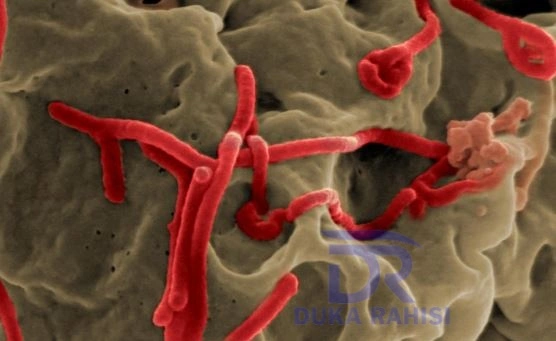12 Things That Corona Virus Do To Your Body
Coronavirus disease (COVID-19) is an infectious disease caused by the SARS-CoV-2 virus.
Most people infected with the virus will experience mild to moderate respiratory illness and recover without requiring special treatment. However, some will become seriously ill and require medical attention.
Older people and those with underlying medical conditions like cardiovascular disease, diabetes, chronic respiratory disease, or cancer are more likely to develop serious illness. Anyone can get sick with COVID-19 and become seriously ill or die at any age.
The best way to prevent and slow down transmission is to be well informed about the disease and how the virus spreads. Protect yourself and others from infection by staying at least 1 metre apart from others, wearing a properly fitted mask, and washing your hands or using an alcohol-based rub frequently. Get vaccinated when it’s your turn and follow local guidance.
The virus can spread from an infected person’s mouth or nose in small liquid particles when they cough, sneeze, speak, sing or breathe. These particles range from larger respiratory droplets to smaller aerosols. It is important to practice respiratory etiquette, for example by coughing into a flexed elbow, and to stay home and self-isolate until you recover if you feel unwell.
12 Things That Corona Virus Do To Your Body
WHAT CORONA VIRUS DO TO YOUR BODY
1. Your Body Temperature
The majority of COVID-19 patients report a rise in their body temperature—aka a fever—which is your body’s response to fighting off an infection. “These can be full blown 102+ fevers for days to weeks or just ‘low grade’ fevers (which don’t actually qualify as a medical definition fever) in the 99’s and low 100s,” Brandon Lawrence, MD, an emergency room physician at Abrazo Arrowhead Hospital in Glendale, AZ, explains to Eat This, Not That! Health.
2. To Your Body Itself—Aches and Pains
Oftentimes, fevers are also accompanied by body/muscle aches. “The interesting thing I’ve been seeing/reading here is that, unlike with the flu where body aches are predominant, body aches here can actually be a predictor for a more severe disease,” points out Dr. Lawrence.
“Obviously not everyone with body aches has a severe form, but you’re somewhat more likely if you do”—including headaches, which are on the CDC’s list of symptoms.
3. To Your Nose
Some COVID-19 patients have reported losing their sense of smell. “Probably the most fascinating part of this to me is the loss of sense of smell and sometimes taste,” explains Dr. Lawrence. “It’s often one of the first questions I’ve been asking patients for the past month.”
If you don’t have the symptom, it doesn’t mean you do not have the virus, but if you have it, “it’s a pretty sensitive finding,” he explains. “There’s almost never congestion or rhinorrhea (runny nose) associated with this.
On brain MRIs we have seen obstruction of olfactory clefts and, last I checked we are unsure what is causing this blockage,” he adds. Some scientists are speculating that the virus may travel up through the nose’s nerve endings, damaging cells.
4. To Your Eyes
Another strange way COVID-19 can impact your body is via your eyes, as there have been several reports of coronavirus-related conjunctivitis, aka pink eye. “Several reports suggest that SARS-CoV-2 can cause a mild follicular conjunctivitis otherwise indistinguishable from other viral causes, and possibly be transmitted by aerosol contact with conjunctiva,” the American Academy of Ophthalmology recently said in a statement.
The condition, which is an inflammation of the membrane that lines the front of the eye and inner eyelid, is more commonly reported in severe cases of the virus
5. To Your Lungs
The lungs are considered ground zero of COVID-19 damage, and are “probably the most important and dramatic system affected by COVID 19,” says Dr. Lawrence. “Some people I’ve seen are largely unaffected here, while some are sitting comfortably with dramatically reduced oxygen levels. Then there’s those either in respiratory distress or totally decompensated from the hypoxia that require high flow oxygen or intubation.”
There’s a lot of debate surrounding the cause of this, he explains. Many point to the ‘cytokine storm,’ which is basically a body’s almost overreaction to the disease process’s inflammatory phases. There was also the original theory that this was inducing as ARDS (acute respiratory distress syndrome) which essentially causes lungs to fail requiring different ventilation strategies and proning. “At this point, we are fairly sure it doesn’t cause a true ARDS syndrome even if the imaging and hypoxia appear similar,” he says.
“A further finding we are seeing is that it is a ‘prothrombotic state’—meaning that it has a proclivity to induce blood clots. In this case, the blood clots travel to the lungs, further damaging them. This isn’t a completely validated theory, but it is what I am frequently reading from critical care docs around the country.”
6. To Your Kidneys
In severe cases of COVID-19, “those that are having a prolonged course in the ICU,” renal failure requiring dialysis has been reported. “Again, this seems to be a part of the cytokine storm problem,” explains Dr. Lawrence.
7. To Your Liver
In more severe cases of the virus, elevated liver enzymes are also being reported. An AST, aspartate aminotransferase test, is a liver blood test. The higher the level of AST signifies a greater amount of liver damage. “We are seeing an elevated AST linked with more severe disease,” Dr. Lawrence explains
8. To Your Blood
As Dr. Lawrence previously explained in regards to the lungs, the “prothrombosis” occurs within the blood vessels. “Another finding we are seeing is the clot load can be so severe, that it actually causes poor blood flow in the legs and a handful of the severe illnesses have resulted in amputations of limbs—like with Broadway star Nick Cordero.”
One theory Dr. Lawrence finds interesting is that the virus actually binds to something within the hemoglobin structure—part of what makes up the red blood cells, which carries and delivers oxygen to the vital organs.
“This causes an almost carbon monoxide/high altitude sickness sort of picture where oxygen is actually displaced from the red blood cells, decreasing your overall ability to carry oxygen resulting in the profound hypoxia. The two of these syndromes together creates many challenges for providers,” he explains.
9. To Your Heart
In regards to the heart organ, in many cases of COVID, there is a mildly elevated BNP —which in very layman’s terms means a relative fluid overload in relation to how well the heart is pumping—”so in people with congestive heart failure it is often dramatically elevated,” Dr. Lawrence explains.
“We are seeing patients come away with reduced ejection fraction (heart pumping ability) in severe disease and sometimes a picture of a viral cardiomyopathy (dilated heart).” While it isn’t clear what the outcome is, in normal viruses, “patients can often recover from this,” he adds
10. To Your Toes
One strange manifestation of COVID-19 has been dubbed “COVID toes,” a “strange new symptom” that is often seen in otherwise asymptomatic kids (or just with fever), explains Dr. Lawrence. However, these red spots, “sometimes painful on the feet/toes,” have not been seen to be associated with severe illness and usually resolve without any treatment in 2-3 weeks.
11. To Your Brain
Patient’s often present to the ED or primary clinic “altered” meaning they are not at their normal mentation baseline. “Many of these that I have seen are often hypoxic, but not all,” Dr. Lawrence explains.
“We are unsure what the etiology here is of the altered mental status (probably our friend the cytokine storm).” Additionally, with the prothrombotic state, he adds that they are also seeing strokes unfortunately.
12. To Your Gut
Multiple studies, including out of China, suggest that over half of patients with known infection have been shown by polymerase chain reaction (PCR) to have virus RNA in their stool, explains Amir Masoud, MD, a Yale Medicine gastroenterologist and assistant professor of internal medicine (digestive diseases) at Yale School of Medicine.
“In fact, almost a quarter of patients with virus RNA in their stool had negative respiratory samples,” he explains. “It’s not yet clear if this represents infectious virus or just fragments without infection capability.”
Viral RNA has also been found in biopsies taken from various segments of the GI tract which may suggest replication in those tissues. “We are also learning more about the GI symptoms that can manifest with COVID infection, the most common by far being diarrhea, which was reported in almost a fifth of infections,” he adds.
Nausea and vomiting can also occur and GI symptoms may be present irrespective of respiratory complaints, “though the latter is thought to represent the mortality risk associated with this virus.”































































I need to to thank you for this good read!! I certainly enjoyed every bit of it. I’ve got you saved as a favorite to check out new stuff you post…
It’s hard to come by educated people on this topic, but you sound like you know what you’re talking about! Thanks
[url=https://xn--80abfg6agmbvel.xn--p1ai/]займы на карту срочно без отказа[/url]
[url=https://xn--32-6kcip2cfsod5b.xn--p1ai/]автоцентр булак[/url]
[url=https://avtopravo-club.ru/]досрочное погашение автокредита[/url]
2369366467236
[url=https://bestcialispillssale.monster/]buy tadalafil mexico online[/url]